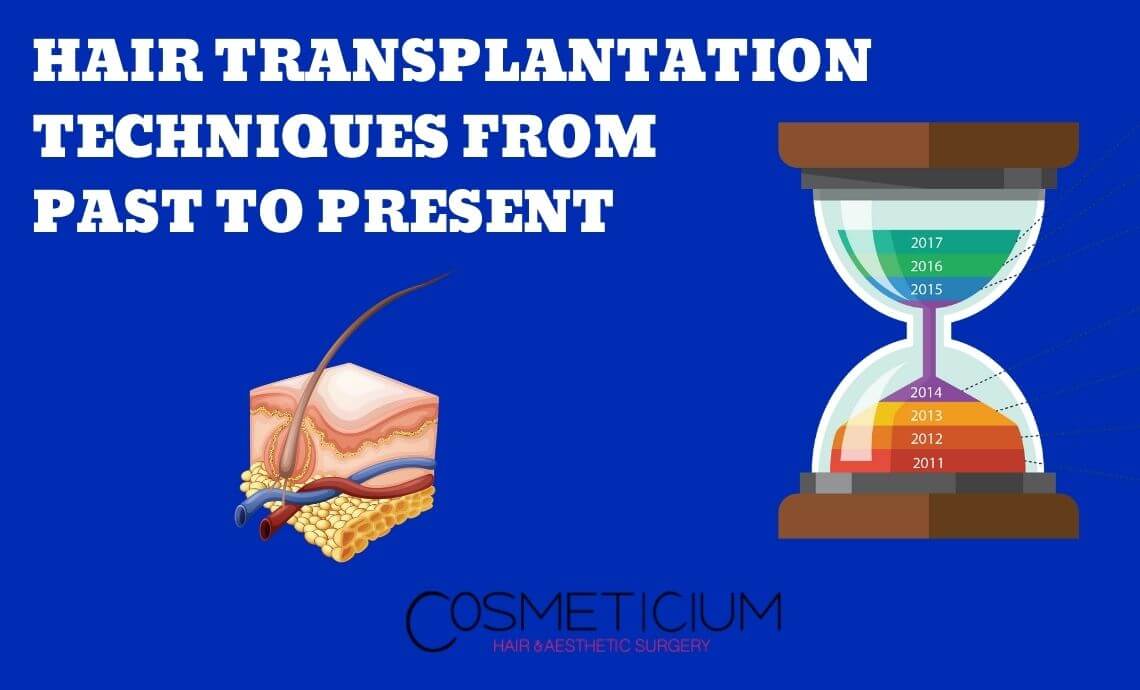If hair loss cannot be prevented, it becomes a problem that may cause baldness. In some types of hair loss, baldness is almost inevitable. The main reason for the development of hair transplantation techniques is the desire of people experiencing such a problem to regain their hair. Hair transplantation, which was first tried by Japanese doctors at a simple level in the early 1900s, has continuously improved.
Hair transplant initiatives which was started by Japanese doctors were ceased with the start of the Second World War. Later, these studies continued in the USA. In 1952, the first hair transplantation surgery was carried out by Dr. Norman Orentreich. The article on this surgery was published in 1959 and went down in history as the first example of hair transplantation.
How were hair transplantations carried out in the past? Which techniques were used? What is the most advanced hair transplantation technique today? You can find all the answers in our article.
Table of Contents
Mini-Micro Grafting
This technique was first introduced in 1984. Contrary to the method used in the past, grafts were used from the donor tissue as a strip. In this technique, mini grafts are transplanted into the center of the bald area and micro grafts are transplanted around it. Thus, the result is much more natural. Depending on the use of mini and micro grafts, this method is also called mini-micro grafting.
The results of this technique are predictable. However, implementation period’s being a little longer may be considered as a serious disadvantage.
Follicular Unit Transplantation (FUT)
It was first implemented in 1994 by Dr. Bernstein. The procedure here is to take the grafts in the donor area as strips and transfer them to the balding area. In the beginning, this method was not favored by the hair transplantation world. Some even approached with suspicion. Therefore, it was not preferred much. However, the results of hair transplantation performed with the FUT technique were much better than the results up to that time. Upon seeing these results, the FUT technique began to spread rapidly. Thus, it has become a technique identified with hair transplantation and continued like this until the early 2000s. After the 2000s, people started to prefer much more advanced new methods.
You May Also Like: Can FUT Hair Transplantation Method Still Be Preferred?
Follicular Unit Extraction (FUE)
The basis of this technique is that grafts are collected one by one, not as strips. FUE, which is an extremely advanced technique in the hair transplantation world, was not originally adopted. Despite the fact that the FUT technique leaves a mark in the donor area, many experts approached the FUE technique with a distance.
In the FUE technique, a small and round incision is made on the skin and the graft is removed. This process continues until the desired number of grafts are gathered. The very small incisions made ensure that there is no scar after healing. This is a great advantage for those who have hair transplantation.

This method wasn’t appreciated as it deserved in the years when it was first developed. In the later periods, the technique was extremely successful and the results looked quite natural, causing the main technique for hair transplantation to be FUE. The method, which was developed in the early 2000s, is still one of the most used techniques today.
You May Also Like: What is the Best Hair Transplantation Technique for Your Needs?
DHI (Direct Hair Implantation)
After the FUE technique, different ways have been sought to respond to people’s expectations much more effectively. As a result of these studies, the method known as DHI (direct hair transplantation) has been developed. Although DHI is a completely new method, it is complementary to the FUE technique. Therefore, the result is much more impressive. The difference of DHI method from FUE is that grooving and graft cultivation can be done simultaneously with pens called choi pen.

The success rate of this technique is very high. On the contrary, the recovery period is very short. Pens which are specially developed for the hair structure of the patients are used. Also known as Choi-Pen, these pens are the main factor that increases the success rate. Although the DHI technique has been developed recently, it is becoming more common every day.

